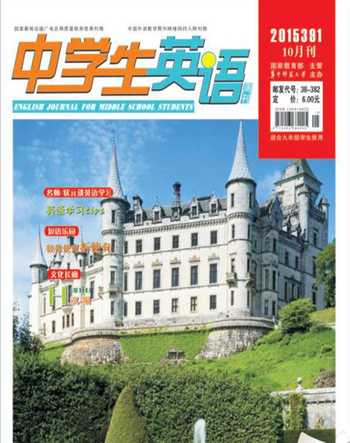Hanfu 汉服
2015-05-30
Do you know Hanfu? Hanfu is traditional1 clothes in old China.
你知道汉服么?汉服是古代中国的传统服装。
“Hanfu is beautiful, but its not convenient2 for daily life. For example, how can we do some sports while we are in Hanfu?” said my classmate Zhou.
“汉服很美,但是在日常生活中(穿起来)很不方便。比如, 我们穿着汉服怎么参加体育活动呢?”我的同学小周说。
“I think Hanfu is elegant3. We should keep this kind of clothes. In Japan, people wear their traditional clothes when festivals are coming. We can learn from Japan. We can keep Hanfu as our traditional clothes. When Spring Festival is coming we can wear Hanfu,” said Liu, a pretty girl with a pair of pink glasses.
“我觉得汉服很高雅。我们应该保留(汉服)这种服装。在日本, 人们在节日到来之际穿着他们的传统服装。我们可以向日本学习, 把汉服作为我们的传统服装。春节的时候,我们可以穿汉服。”戴着粉色眼镜的漂亮女孩小刘说。
Do you want to wear Hanfu? I think Hanfu is a part of Chinese culture. I suggest that we should keep this kind of old clothes for inheritance4. We dont need to wear it every day. We can wear it on special days or in our traditional festivals.
你想穿汉服吗?我觉得汉服是中国文化的一部分。我建议我们应该保留这种古老的服装,传承中国文化。我们不用每天都穿汉服,可以在特殊的日子或者传统节日里穿。
Hanfu refers to the pre-17th century traditional clothing of the Han Chinese, the main part of Chinese people. It has a history as long as the history of the Han Chinese people, but it is largely unknown in China today.
汉服是指17世纪之前的中国主体民族——汉族的传统服装。汉服和汉民族的历史一样悠久,但是在现代中国,知道汉服的人不多。
根据中国历史记载,汉服可以追溯到一位圣君——黄帝(Yellow Emperor)的统治时期,即大约五千年前。中国当时已经出现了原始的农业和纺织业,开始用织成的麻布来做衣服。黄帝的妻子嫘祖发明了饲蚕和丝纺后,人们的衣冠服饰日臻完善。汉服本身有记载的历史就有3000多年。
殷商以后,冠服制度初步建立;春秋战国时期,衣服的款式(style)空前丰富;秦统一中国以后,建立了各项制度,其中也包括衣冠制度。自此而下,一直到明朝末年,汉服一直在历史的长河中不断发展,成为了中华文明极其重要的组成部分。得体地穿着汉服也是一种重要的礼仪教养。孔子(Confucius)认为汉服是中华礼仪典范(ceremony and ritual)的重要组成部分。
汉服于清朝初年失传。清朝是满族人(Manchus)建立的政权。满族人占领中原后,强迫汉族男子剃发易服,留辫子,穿满族服装。清朝两百多年的历史中,汉族男子服饰基本以满服为模式,旗袍、长衫、马褂都是以满族为主体的民族服饰的改良和发展,而非汉族传统的民族服饰。
汉族长期的抵制斗争使清政府也考虑做些让步,以稳定局势,于是提出所谓“十从十不从”,即服装上男从女不从,生从死不从,阳从阴不从,官从隶不从,老从少不从,儒从而僧道不从,娼从而优伶不从,仕宦从婚姻不从,国号从官号不从,役税从语言文字不从。这点有限的让步,终于保留了一些汉服中的特点,但总体而言汉服仍在清朝统治者武力镇压下逐渐消亡了。
近年来,中国兴起了一个为了复兴(revive)汉族传统服装而进行的汉服运动(Han costume movement)。
Styles of Hanfu
汉服的样式
One of the main features of Hanfu is its Jiaoling Youren(cross collar and right lapel), and tying with sash5 in place of buttons. And flat pattern cutting makes the clothes wide and loose and the wearers both look and feel comfortable.
汉服的一个主要特点是交领右衽,不用扣子而是系腰带,平面的剪裁使得衣服很宽松,穿上后看起来和感觉起来都很舒适。
汉服主要有三种样式:上衣下裙,连身裙,或者上衣下裤。基本类型是衣,即上衣;裳,裙子。以深衣为例,深衣是那种将衣和裳连起来包住全身的长款连身裙,这种穿法就是其名为“深衣”的原因。
Parts of Shenyi
深衣的组成
Ling(Jin):the collar of Yi
领(衿):衣领
Jin: the front of Yi
襟:上衣前端
Ren:the lapel of Yi
Jiaoling Youren:crossed collars, tying to the right
衽:衣的翻领
交领右衽是汉服的标准样式。(男子与女子都须将汉服左襟压在右襟上,反过来穿的是其他民族的穿法,或者是古代举行葬礼时给逝者更衣的穿法)
Qu: sleeve cuffs
祛:袖口
Mei: sleeves
袂:衣袖
Yaodai: waist sash
腰带:腰部系带
Chang: skirt
裳:裙子
Ju: the hem of Shang
裾:裙子的下摆边缘
The Influences Of Hanfu
汉服的影响
Because of the length of its history and Chinas cultural influence on the region, Hanfu has shaped the styles of traditional costumes of some Asian countries. Korean Hanbok and Japanese Kimono have the special style and some differences from Hanfu. But they had been influenced by Hanfu. These clothings have common features: Youren and wide sleeves.
由于中国悠久的历史及其在亚洲形成的强势的文化影响力,汉服对几个亚洲国家的民族服装样式的形成有着深远的影响。韩国的韩服和日本的和服样式独特,与汉服有不同之处,但是它们都受汉服的影响至深,三者之间也有共同之处:右衽和广袖。
The Han Chinese clothing mostly shows our own culture. In China, the Han Chinese clothing lovers are using their own action“Han costume movement” to show their pursuit6 of the Han Chinese clothing culture.
汉服很大程度上体现了我们本民族的文化。国内汉服运动爱好者们正在用自己的实际行动—— “汉服运动” 来表达自己对汉服文化的热爱。
